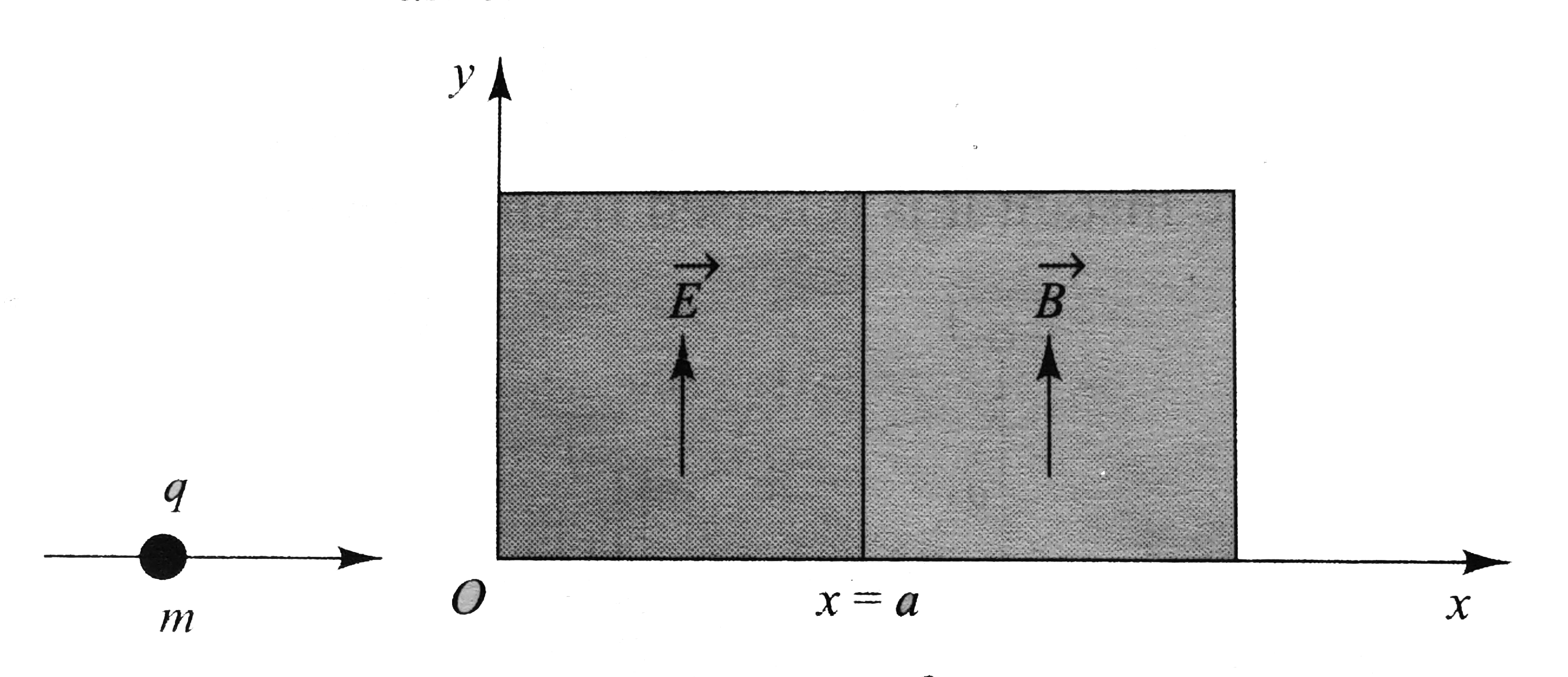There is and electric field E in the +x direction. If the work done by the electric field in moving a charges 0.2C through a distance of 2m along a line making an angle of 60∘ with the x-axis is 1.0J, what is the value of E in NC−1?
The correct Answer is:5
To solve the problem step by step, we will use the formula for work done in an electric field and the relationship between force, electric field, and charge.
Step 1: Understand the Work Done Formula
The work done W by an electric field when moving a charge q through a distance d at an angle θ with respect to the direction of the electric field E is given by:
W=F⋅d⋅cos(θ)
where F is the force acting on the charge.
Step 2: Relate Force to Electric Field
The force F acting on a charge q in an electric field E is given by:
F=q⋅E
Substituting this into the work done formula gives:
W=(q⋅E)⋅d⋅cos(θ)
Step 3: Substitute Known Values
From the problem, we know:
- W=1J
- q=0.2C
- d=2m
- θ=60∘
Now, substituting these values into the equation:
1=(0.2⋅E)⋅2⋅cos(60∘)
Step 4: Calculate Cosine of the Angle
We know that:
cos(60∘)=12
So, substituting this into the equation:
1=(0.2⋅E)⋅2⋅12
Step 5: Simplify the Equation
This simplifies to:
1=(0.2⋅E)⋅1
Thus, we have:
1=0.2⋅E
Step 6: Solve for Electric Field E
To find E, we rearrange the equation:
E=10.2
Calculating this gives:
E=5N/C
Final Answer
The value of the electric field E is:
E=5N/C
The work done W by an electric field when moving a charge q through a distance d at an angle θ with respect to the direction of the electric field E is given by:
W=F⋅d⋅cos(θ)
where F is the force acting on the charge.
The force F acting on a charge q in an electric field E is given by:
F=q⋅E
Substituting this into the work done formula gives:
W=(q⋅E)⋅d⋅cos(θ)
From the problem, we know:
- W=1J
- q=0.2C
- d=2m
- θ=60∘
1=(0.2⋅E)⋅2⋅cos(60∘)
We know that:
cos(60∘)=12
So, substituting this into the equation:
1=(0.2⋅E)⋅2⋅12
This simplifies to:
1=(0.2⋅E)⋅1
Thus, we have:
1=0.2⋅E
To find E, we rearrange the equation:
E=10.2
Calculating this gives:
E=5N/C
The value of the electric field E is:
E=5N/C
Topper's Solved these Questions
- COULOMB LAW AND ELECTRIC FIELDBook:CENGAGE PHYSICS ENGLISHChapter:COULOMB LAW AND ELECTRIC FIELDExercise:Single Correct Ansewr Type
Explore 20 Videos
- COULOMB LAW AND ELECTRIC FIELDBook:CENGAGE PHYSICS ENGLISHChapter:COULOMB LAW AND ELECTRIC FIELDExercise:Multiple Correct Answers Type
Explore 2 Videos
- COULOMB LAW AND ELECTRIC FIELDBook:CENGAGE PHYSICS ENGLISHChapter:COULOMB LAW AND ELECTRIC FIELDExercise:Comprehension
Explore 25 Videos
- CENGAGE PHYSICS DPPBook:CENGAGE PHYSICS ENGLISHChapter:CENGAGE PHYSICS DPPExercise:subjective type
Explore 51 Videos
- ELECTRIC CURRENT & CIRCUITSBook:CENGAGE PHYSICS ENGLISHChapter:ELECTRIC CURRENT & CIRCUITSExercise:Kirchhoff s law and simple circuits
Explore 15 Videos
Similar Questions
There is an electric field E in x-direction. If the work done on moving a charge of 0.2C through a distance of 2 m along a line making an angle 60∘ with x-axis is 4 J, then what is the value of E?
View SolutionThere is an electric field E in x-direction. If the work done on moving a charge of 0.2C through a distance of 2w m along a line making a angle 60∘ with x-axis is 4 J, then what is the value of E?
View SolutionWhat is the work done in moving a test charge q through a distance of 1 cm along the equatorial axis of an electric dipole ?
View SolutionThe gravitational field in a region is given by →g=(2ˆi+3ˆj) N/kg. The work done in moving a particle of mass 1 kg from (1, 1) to (2,13) along the line 3y + 2x = 5 is
View SolutionA positively charged particle, having charge q, is accelerated by a potential difference V. This particle moving along the x-axis enters a region where an electric field E exists. The direction of the electric field is along positive y-axis. The electric field exists in the region bounded by the lines x=0andx=a. Beyond the line x=a (i.e., in the region x>a), there exists a magnetic field of strength B, directed along the positive y-axis. Find

a. at which point does the particle meet the line x=a.
b. the pitch of the helix formed after the particle enters the region x≥a. (Mass of the particle is m.)
View SolutionAn electric dipole is placed at the origin along x-axis.The electric field at any point , whose position vector , makes an angle θ with the x-axis ,makes an angle,
View SolutionElectric field on the axis of a small electric dipole at a distance r is →E1 and →E2 at a distance of 2r on a line of perpendicular bisector is
View SolutionThe work in rotating electric dipole of dipole moment p in an electric field E through an angle θ from the direction of electric field, is:
View SolutionA uniform electric field E exists between two oppositely charged plates (Fig. 3.38). What will be the work done in moving a charge q along a closed rectangular path ?
 .
.
View SolutionThere exists an electric field of 1NC−1 along Y direction. The flux passing through the square of 1 m placed in xy−plane inside the electric field is
View Solution